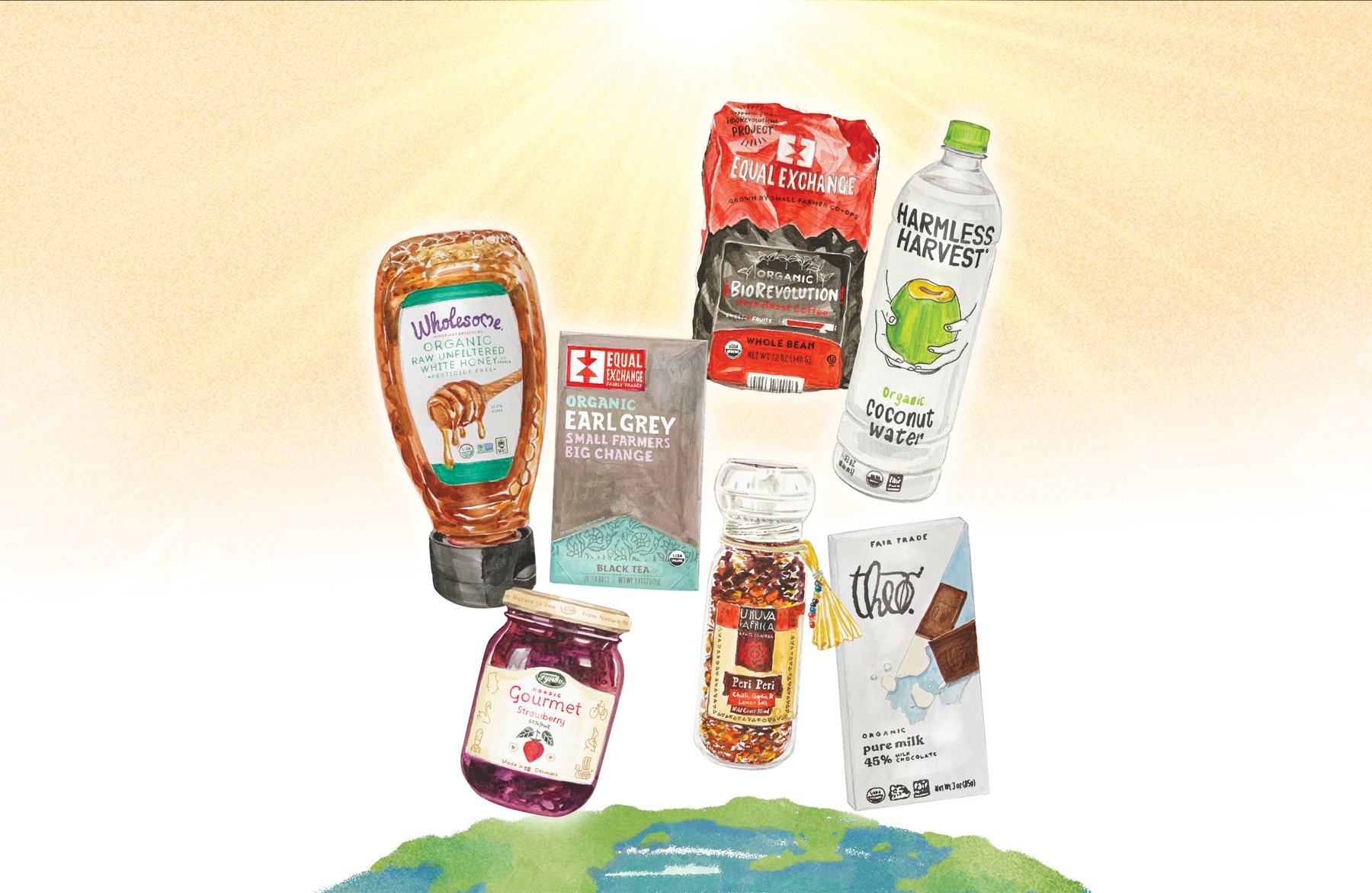
The Fair Trade Movement Heats Up
Illustrations by Anna Takahashi
Around the globe, an estimated 152 million children work as child laborers and millions of adults are forced to work more than 100 hours each week in sweatshops. The products made by exploited workers can be found in our homes and places of employment. In contrast, fair trade requires minimum social and environmental standards be met in production and trade, thereby protecting workers and farmers.
When it comes to the practice, rather than the ideology, of fair trade, Grace Burnite has raised the bar.
Back when Grace was a freshman at Cal Poly she joined Net Impact, the global organization that empowers young people to make a positive impact on the world. Grace joined the club’s Fair Trade Committee, where she worked with university officials and the campus dining department on a campaign to earn Cal Poly fair trade recognition. The distinction requires the use of fair trade products, which are goods bought and sold by responsible companies that empower workers and provide safe work environments. That includes supporting marginalized farmers in the food systems on an international scale.
After leaving her mark on Cal Poly, Grace could have stopped there and called it good. Thankfully, she didn’t. Building on this momentum, Grace looked beyond her college walls and set sight on making the city of San Luis Obispo an official Fair Trade Town, of which there are only 46 in the U.S.
Among the team of city leaders and impassioned students who joined Grace was Kasey Main, the Communications Coordinator of SLO Food Co-Op. “Our store carries many fair trade products ranging from coffee, teas and chocolates to hand-woven shopping baskets — and I happened to notice similar baskets during one of my visits to The Center [yoga studio],” says Kasey. “Steph Stackhouse there was instrumental in introducing me to the importance of the fair trade movement, and I immediately knew SLO Food Co-Op had to play a role in San Luis Obispo’s Fair Trade Towns USA certification.”
To become a Fair Trade Town, a municipality must achieve five core goals. They include the city council passing a local resolution to support fair trade and the town showing that local retailers are selling fair trade products. In San Luis Obispo, the team looked to the city of Los Angeles as a model since it became the largest Fair Trade Town in North America in 2020.
Stackhouse, Owner of The Center Studio and Boutique in downtown San Luis Obispo, played a big role in getting a draft declaration on the agenda for a city council meeting. The hard work paid off in May, when former Mayor Heidi Harmon issued the Fair Trade Proclamation that recognizes the second Saturday of that month as “World Fair Trade Day” and October as “Fair Trade Month.”
“SLO as a consumer market has been really supportive, and I particularly recognize the [previous] mayor’s interest and leadership in elevating the city’s commitment to sustainable food and consumer product systems,” says Kasey.
The proclamation was read at the city council meeting to spread awareness and encourage residents to support fair trade in the community. This declaration, the first step, “informs and propels SLO’s purchasing power,” says Grace, “and increases diversity and equity for farmers across the globe through fair wages, practices and improved workplace conditions.”
“It’s in its early days,” confers Steph, who calls for use of fair trade products like coffee and tea during government, public and private sector meetings.
“Buying fair trade is a way we can help workers who aren’t always thought about when we see the final product on the store shelves,” says Grace. “Throughout the supply chain, that product has been touched by multiple people who have put their hard work into this creation. This is an opportunity to support companies that are prioritizing the safety and well-being of the workers behind the products.”

